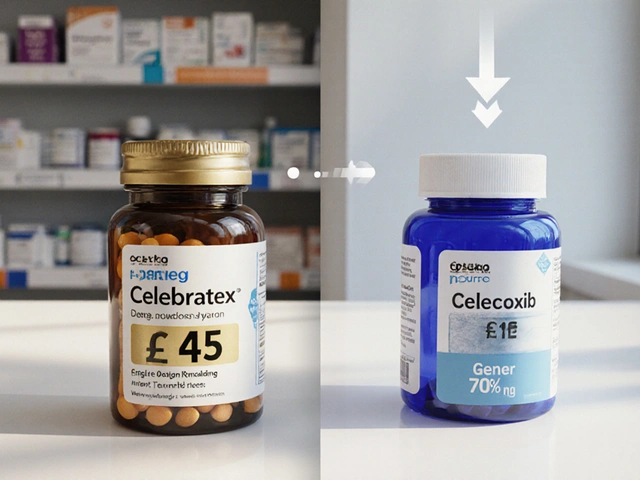
Health June 22, 2025
Xanthan Gum Benefits: How This Additive Is Transforming Dietary Supplements
Sticky, stretchy, and kind of gooey—that’s what most people first notice about xanthan gum in their food. But go beyond the kitchen, and you’ll find xanthan gum making waves in the dietary supplement world. If you checked the ingredient list on your favorite nutrition powders, protein shakes, or even those wellness gummies, xanthan gum is likely hanging out near the bottom. At first glance, it looks like just another additive, but this stuff has a backstory that barely anyone talks about. In fact, it’s solved headaches for both supplement makers and folks searching for products that fit their special diets. Back in the 1960s, a researcher at the United States Department of Agriculture accidentally discovered xanthan gum while working with the bacteria Xanthomonas campestris. Thanks to its unusual ability to form gels and stabilize mixtures, the ingredient exploded into the food scene. But its role in nutritional supplements? That’s where things start to get really interesting.
Xanthan Gum: Not Just a Filler
If you’ve heard of xanthan gum outside a food-related argument in a gluten-free forum, I’m impressed. What makes xanthan gum stand out isn’t just that it’s vegan, allergy-friendly, and easily produced—it’s the way it helps ingredients “play nice with each other.” Imagine trying to mix oil and water. It never works, right? Xanthan gum steps in like a diplomatic referee, suspending powder particles and keeping everything evenly mixed, so you don’t end up with that gross sludge at the bottom of your shake.
People often link xanthan gum to baking because it adds that chewy texture to gluten-free breads, but its impact is way bigger in the supplement world. When supplement makers deal with protein powders or vitamin-laced drinks, they have a big problem: vitamins, minerals, amino acids, and added nutrients all love to clump up, separate, or sink to the bottom. Enter xanthan gum. A tiny bit—just a fraction of a percent—keeps everything smoothly suspended. Even better? It’s tasteless, so it doesn’t mess with those vanilla or chocolate flavors we all crave first thing in the morning.
I learned something wild the other day: the global xanthan gum market was valued at almost $1.2 billion in 2023, and about a quarter of that demand is directly tied to the supplement and nutraceutical sector. Why? Because it saves time and money for manufacturers when it comes to batching, shipping, and giving customers something consistent every time. Products don’t separate or spoil as easily, which is crucial if you’re storing supplements in steamy gym lockers or transport vans all summer long. Xanthan gum even helps gentle, sensitive ingredients stay stable on the shelf for longer, beating back the urge to break down or clump up.
Let’s bust a myth: xanthan gum isn’t just “filler.” Unlike maltodextrin (a starchy thickener), it doesn’t bump up the calorie count. A single serving in a health shake runs less than 10 calories. It fits right into low-carb, ketogenic, and even vegan products, making it a hit across specialty diets. Some newer supplement recipes are even using xanthan gum to cut down on sugars and artificial thickeners. It’s kosher, halal, and gluten-free approved, ticking boxes for a huge range of consumers.
Not only does xanthan gum make things mix beautifully, it can improve the mouthfeel—the creamy, smooth sensation so many protein powders and preworkout drinks lack. If you’ve ever had an “off-brand” protein shake that tastes like chalk, chances are, the manufacturer skimped on gums like xanthan. That blend of creamy and pourable is thanks to the gum’s unique microstructure. Seriously, the world’s best protein shakes? Almost all of them use a gum blend, with xanthan gum front and center.
| Year | Xanthan Gum Market Value (USD) | Percentage Used in Supplements |
|---|---|---|
| 2020 | $950 million | 18% |
| 2021 | $1.05 billion | 19% |
| 2022 | $1.13 billion | 21% |
| 2023 | $1.19 billion | 24% |
So, the next time somebody calls xanthan gum pointless, tell them it’s doing the heavy lifting behind the scenes: no more powder explosions when you add water, no more slime at the bottom of the bottle, just smooth, stable mixes every time you shake your bottle or scoop your favorite powder.

Xanthan Gum Benefits in Supplements: More Than Just Texture
The secret sauce behind xanthan gum is its knack for making supplements actually work for real people in real situations. So many trends in supplement design—all those greens powders, amino energy drinks, and spiked protein bars—only succeed because xanthan gum keeps the ingredients together and stable from the factory right up until you take a sip or a bite. Without it, you'd deal with weird clumping, unmixable blends, and nasty textures. Seriously, Zephyr (my cat) probably wouldn’t care, but for humans, it's a dealbreaker.
Another bonus? It’s almost impossible to overdose on xanthan gum at the rates used in supplements. The FDA labels it “generally recognized as safe” (GRAS), since a person would have to gobble dozens of spoonfuls for even a mild stomach upset. Typical serving size in a scoop of protein powder hovers around 0.3-0.5 grams—not even half a teaspoon per serving. Studies from universities in Europe and the US back this up: even at higher dietary levels (up to 15g per day), healthy adults showed no negative impact on nutrient absorption or gut microbiome balance. Still, moderation is always smart. Too much of anything won’t end well for your digestive system.
Supplement makers rely on xanthan gum not only for what you can see but also for stability you can’t notice. Imagine those probiotics in your supplement that are supposed to boost your digestion. Those alive-but-fragile bacteria need a cozy environment. Xanthan gum acts like a mini moisture shield, buffering delicate supplement ingredients from oxygen, light, and other elements that might cause the bits to lose potency. There’s a reason top-tier supplements can claim a two-year shelf life—it’s partly because of xanthan gum’s stabilizing powers.
People with sensitive guts, especially those who are gluten intolerant or who have food allergies, appreciate that xanthan gum is usually made from non-allergenic carbohydrates like corn, wheat, or soy. But, the finished gum contains so little residual protein, reactions are almost unheard of. And for those following Paleo or Whole30? The verdict is split, since it’s not technically “ancient,” but it’s definitely safer and gentler than thickeners like carrageenan or modified starches. Often, plant-based or hypoallergenic supplement lines pick xanthan gum for this exact reason—it plays nice with nearly every special menu.
There is one more neat perk—a bit nerdy, but stick with me. Xanthan gum makes supplements more “bioavailable,” a scientific way of saying your body absorbs nutrients more easily. The gel-like matrix xanthan gum forms in liquids can slow down the passage of nutrients, meaning vitamins or minerals are released more gradually as they move through your digestive tract. This is especially important in meal-replacement shakes or fiber blends, where you don’t want a sugar spike or crash. The gum’s structure helps regulate how quickly things hit your stomach, which can turn a basic shake into a real nutrition powerhouse.
And for people who actually enjoy mixing powders at home (respect!), xanthan gum has saved many a recipe from disaster. Just add in a pinch before blending, and you’ll see fewer lumps. The same principle makes it a hit in kitchen hacks: from whipped supplements to frothy shakes, it delivers that perfect creamy texture.
- It’s gluten-free, vegan, keto- and paleo-friendly (in moderation)
- No taste, no weird aftertaste
- Makes every serving smooth and consistent
- Stabilizes live ingredients, like probiotics and enzymes
- Improves shelf life for powders, gummies, and chews
- Very low caloric impact—less than 10 calories per serving
- Rarely triggers allergies
So if you’re tired of gritty, clumpy shakes or if you find yourself tossing out supplements that “went weird” in storage, double-check for xanthan gum on the label. If it’s there, odds are, your supplement experience is about to get a whole lot smoother.

Tips for Using and Understanding Xanthan Gum in Your Supplement Routine
Maybe you’re rolling your eyes at yet another mystery ingredient. Hey, I get it—labels on supplements can look like a chem lab inventory. But knowing how xanthan gum works (and why it’s there) can help you find better products, dodge cheap fakes, and even experiment at home with your own blends. Here’s my crash course, pet-approved by Zephyr (okay, he slept through it, but if he could read labels, he’d probably agree).
How to Spot Quality: Reputable supplement brands usually list xanthan gum near the tail end of the ingredients list. If it’s one of the first few, the formula probably uses more than necessary, and you might end up with a shake that’s more pudding than drink. For protein-rich or fiber-heavy blends, a touch of xanthan gum is ideal because it smooths things out. But skip products where it’s paired with tons of artificial flavors or sweeteners. The best blends use minimal “extras.”
DIY Supplement Hacks: Mixing your own powders? Xanthan gum is your secret weapon. For every cup of liquid, start with 1/8 teaspoon, whisk it in vigorously, and let it sit a minute or two. It’ll thicken up and give you that smooth, professional feel. Too much can get slimy fast, so go slow. Works great for veggie juices, protein shakes, or even turning sleepy oatmeal into an Instagram breakfast.
Functional Formulas: In the supplement industry, xanthan gum is showing up in some unexpected places, not just shakes. Fiber candies, electrolyte chews, even vitamin-packed popsicles—manufacturers use the gum’s gelling power to lock in vitamins and keep bites from turning into goo at room temp. It’s what lets energy chews and gummies stay soft but never sticky, even out in the sun.
People sometimes worry about how their bodies handle additives. Xanthan gum simply passes through the human gut almost untouched, acting like soluble fiber. That means, in moderate doses, it can even help you feel fuller after a meal or snack—some researchers at UC Davis found people who added xanthan gum to shakes tended to eat about 10% fewer calories at the next meal. Now, don’t expect a miracle diet pill, but if a smoothie keeps you full till lunch, that’s a bonus.
Allergies and sensitivities? Read labels if you’re extremely sensitive to corn, wheat, or soy byproducts. Most commercial xanthan gum is so purified that the source doesn’t matter for most people, but anyone with rare food allergies has to be careful. Some supplement brands will highlight “corn-free” or “soy-free” xanthan at customer request.
- If your supplement clumps or separates, xanthan gum is probably low or missing—switch brands or add your own pinch when mixing.
- If you have dietary GI issues, add new supplements with xanthan gum gradually. Most people tolerate it just fine at recommended levels.
- Look for organic or non-GMO xanthan gum if sustainability is a top priority for you.
- Try out simple recipes for at-home nutrition shakes using xanthan gum; a little goes a long way.
- For the smoothest experience, mix xanthan gum powder with dry ingredients before adding liquid, or blend on high for a few seconds.
Curious about the future? Supplement makers are exploring how xanthan gum can encapsulate probiotics, boost the effect of “slow-release” vitamins, and cut sugar in new functional snacks. It handles heat and freezing surprisingly well, so expect its role to grow in ready-to-drink shakes and grab-and-go gummies.
Honestly, it’s wild how a bacteria-derived gel from the ’60s became a hidden hero in our protein shakes and vitamin gummies. Next time you mix up your favorite supplement, take a second to thank xanthan gum for saving you from a mouthful of powdery disappointment. Because sometimes the most boring-sounding ingredient is the one making all the difference.
Write a comment
Items marked with * are required.






8 Comments
Robert Gallagher June 28, 2025 AT 22:18
Xanthan gum is the unsung hero of every decent protein shake I've ever had
Used to hate the texture of cheap powders until I learned to look for it on the label
Now I avoid anything without it like it's radioactive
It's not magic, it's just science that works
Howard Lee June 29, 2025 AT 16:14
The scientific and practical applications of xanthan gum in dietary supplements are genuinely impressive. Its ability to stabilize heterogeneous mixtures without altering flavor or nutritional content demonstrates a sophisticated understanding of colloidal chemistry. Moreover, its GRAS status and minimal caloric contribution make it an ideal functional ingredient for modern nutraceutical formulations. The data presented regarding market growth and usage percentages further validate its critical role in product consistency and consumer satisfaction.
Nicole Carpentier July 1, 2025 AT 09:52
I never thought I'd get emotional about a gum in my protein shake but here we are 😭
Thank you xanthan gum for making my post-workout drink not taste like chalk dust
Also I'm so proud of us humans for turning a bacteria into something this useful
Global supply chains and dietary needs are wild
Hadrian D'Souza July 1, 2025 AT 23:29
Oh wow, xanthan gum. The elixir of the modern supplement industrial complex. The only thing more pathetic than how much we rely on this bacterial slime is how people treat it like some kind of wellness saint
It’s not a miracle. It’s a cheap thickener that lets companies charge $40 for powdered sugar with a side of pseudoscience
Next they’ll tell us the plastic in the bottle is ‘bioavailable’
Also, Zephyr the cat? Cute. But he doesn’t care. He’s probably judging your entire life choice right now
Brandon Benzi July 2, 2025 AT 21:24
Why are we praising some foreign lab-made chemical in our protein shakes?
Back in my day we used real ingredients - egg whites, milk, honey
Now we got bacteria slime and call it ‘clean label’
This is what happens when you let engineers run food
Next they’ll put polysorbate in your water
Abhay Chitnis July 4, 2025 AT 04:13
Bro xanthan gum is just a scam 😂
Same stuff used in Indian pakoras to bind batter
Now it’s ‘premium supplement tech’? 🤡
Also probiotics don’t need a hug from a polymer
They need chill vibes and no sugar
Also I use it in my chai powder - works great 😎
Robert Spiece July 4, 2025 AT 15:43
It’s funny how we anthropomorphize ingredients now
We don’t just use xanthan gum - we ‘thank’ it
We give it credit for solving human problems it never intended to solve
It’s just a polysaccharide chain produced by a bacterium that evolved to survive on cabbage
It doesn’t care about your protein shake
It doesn’t care about your gut health
It doesn’t care if you’re keto, vegan, or Paleo
It’s just doing what molecules do - interacting with water
And yet we turn it into a hero because we’re terrified of complexity
We want a single villain to blame and a single saint to praise
So we worship a polymer
And call it wisdom
Vivian Quinones July 4, 2025 AT 21:31
So you're telling me this weird powder in my shake is what keeps it from turning into a science experiment? I feel like I've been cheated my whole life
Why didn't anyone tell me this before?
Now I'm mad I ever bought cheap stuff
Also I'm gonna start adding it to my oatmeal
It's basically a magic bean for grown-ups